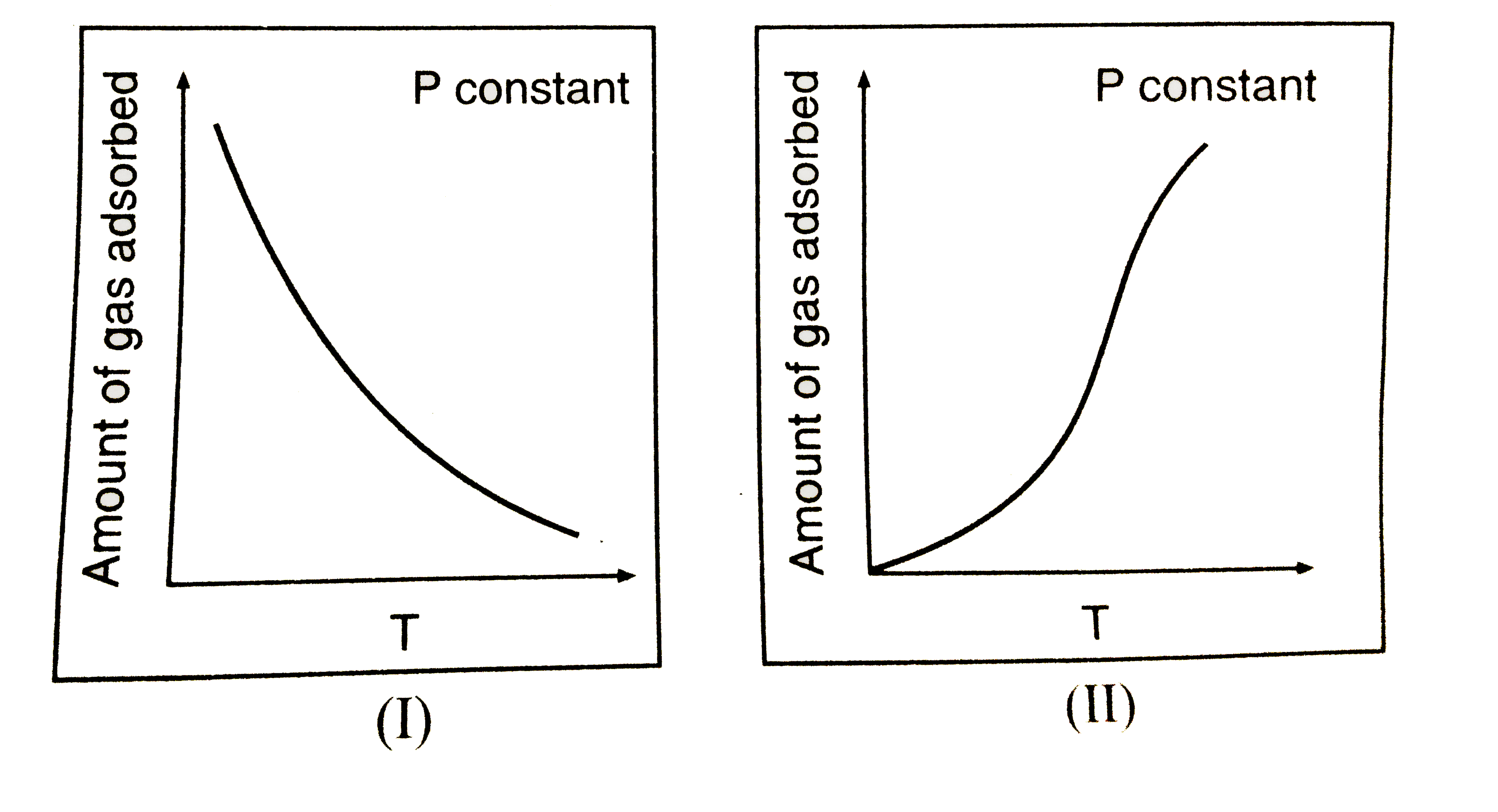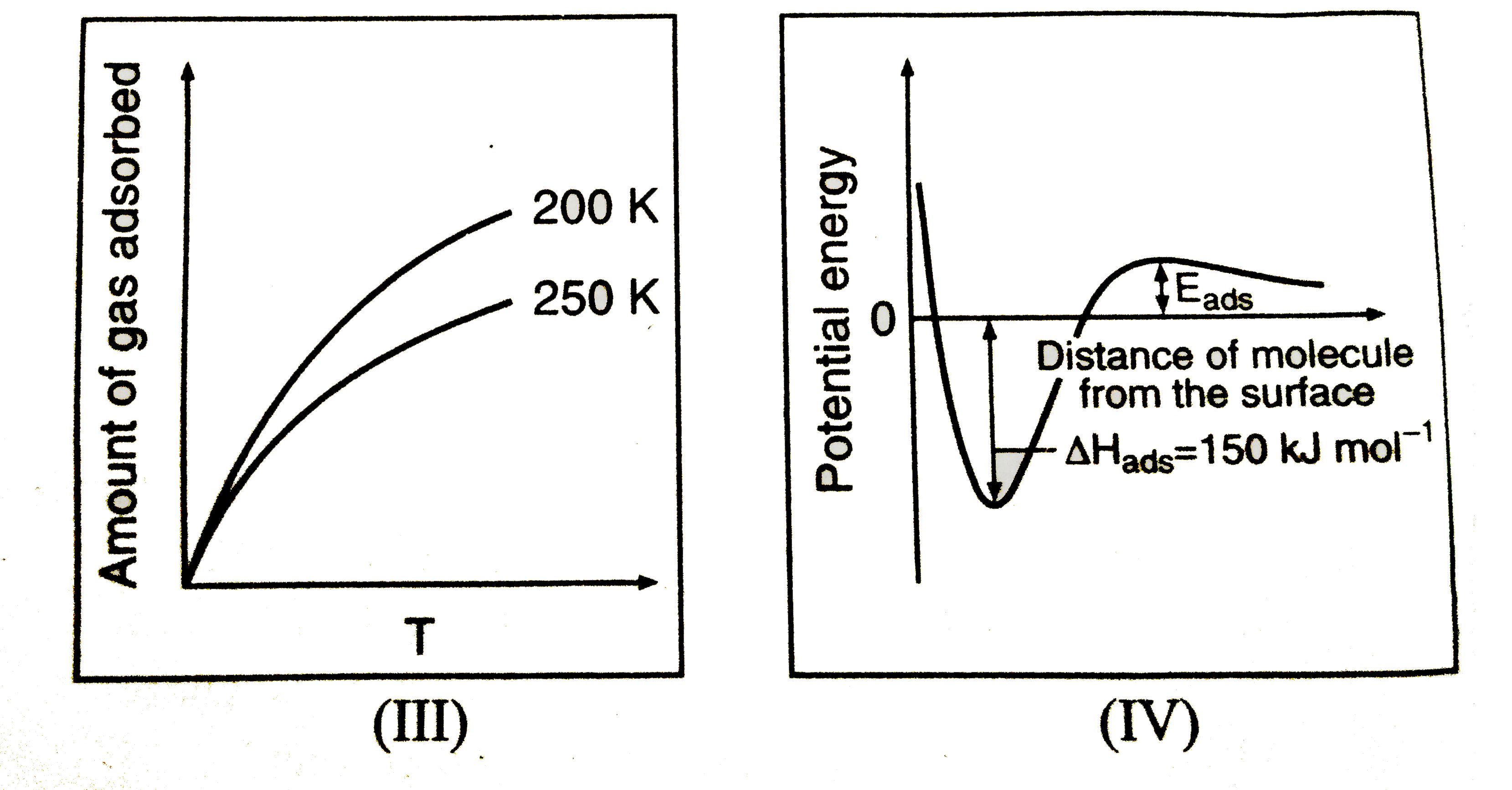Write the differences between physisorption and chemisorption with respect to the following:
(i) Specificity (ii) Temperature dependence (iii) Reversibility and (iv) Enthalpy change
To differentiate between physisorption and chemisorption with respect to specificity, temperature dependence, reversibility, and enthalpy change, we can summarize the differences as follows:
Differences between Physisorption and Chemisorption
1. Specificity:
- Physisorption: It is not specific in nature. All gases can be adsorbed on the surface of a solid to some extent. The adsorption occurs due to weak van der Waals forces.
- Chemisorption: It is highly specific in nature. It occurs only when there is a chemical bond formation between the adsorbate and the adsorbent.
2. Temperature Dependence:
- Physisorption: It occurs at low temperatures and typically decreases with an increase in temperature. This is because the weak forces can be overcome by thermal energy.
- Chemisorption: It occurs at high temperatures and generally increases with an increase in temperature. This is due to the activation energy required for bond formation.
3. Reversibility:
- Physisorption: It is reversible in nature. The adsorbed molecules can easily be removed by changing the conditions (e.g., lowering the pressure).
- Chemisorption: It is irreversible in nature. Once the chemical bond is formed, it is difficult to remove the adsorbate without breaking the bond.
4. Enthalpy Change:
- Physisorption: It has a low enthalpy of adsorption, typically ranging from 30 to 40 kJ/mol. This is due to the weak interactions involved.
- Chemisorption: It has a high enthalpy of adsorption, typically ranging from 80 to 240 kJ/mol. This is because of the strong chemical bonds formed during the process.
Summary Table
| Property | Physisorption | Chemisorption |
|-----------------------|---------------------------------------|----------------------------------------|
| Specificity | Not specific | Highly specific |
| Temperature Dependence | Occurs at low temperatures | Occurs at high temperatures |
| Reversibility | Reversible | Irreversible |
| Enthalpy Change | Low (30-40 kJ/mol) | High (80-240 kJ/mol) |
- Physisorption: It is not specific in nature. All gases can be adsorbed on the surface of a solid to some extent. The adsorption occurs due to weak van der Waals forces.
- Chemisorption: It is highly specific in nature. It occurs only when there is a chemical bond formation between the adsorbate and the adsorbent.
- Physisorption: It occurs at low temperatures and typically decreases with an increase in temperature. This is because the weak forces can be overcome by thermal energy.
- Chemisorption: It occurs at high temperatures and generally increases with an increase in temperature. This is due to the activation energy required for bond formation.
- Physisorption: It is reversible in nature. The adsorbed molecules can easily be removed by changing the conditions (e.g., lowering the pressure).
- Chemisorption: It is irreversible in nature. Once the chemical bond is formed, it is difficult to remove the adsorbate without breaking the bond.
- Physisorption: It has a low enthalpy of adsorption, typically ranging from 30 to 40 kJ/mol. This is due to the weak interactions involved.
- Chemisorption: It has a high enthalpy of adsorption, typically ranging from 80 to 240 kJ/mol. This is because of the strong chemical bonds formed during the process.
|-----------------------|---------------------------------------|----------------------------------------|
| Specificity | Not specific | Highly specific |
| Temperature Dependence | Occurs at low temperatures | Occurs at high temperatures |
| Reversibility | Reversible | Irreversible |
| Enthalpy Change | Low (30-40 kJ/mol) | High (80-240 kJ/mol) |
Topper's Solved these Questions
- SURFACE CHEMISTRY BOOK - ICSECHAPTER - SURFACE CHEMISTRY EXERCISE - EXERCISE (PART-II ( DESCRIPTIVE QUESTIONS )) ( LONG ANSWER QUESTIONS)
41 Videos
- SURFACE CHEMISTRY BOOK - ICSECHAPTER - SURFACE CHEMISTRY EXERCISE - ISC EXAMINATION QUESTIONS
4 Videos
- SURFACE CHEMISTRY BOOK - ICSECHAPTER - SURFACE CHEMISTRY EXERCISE - EXERCISE (PART-II ( DESCRIPTIVE QUESTIONS )) (VERY SHORT ANSWER QUESTIONS)
31 Videos
- SPECIMEN QUESTION PAPERBOOK - ICSECHAPTER - SPECIMEN QUESTION PAPEREXERCISE - QUESTION
140 Videos
- THE SOLID STATEBOOK - ICSECHAPTER - THE SOLID STATEEXERCISE - MULTIPLE CHOICE QUESTIONS (Assertion-Reason based questions)
10 Videos
Similar Questions
Write differences between physisorption and chemisorption.
View SolutionDifferentiate between Apes and Man with respect to the following characteristics:
(i) Posture
(ii) Brow ridges
(iii) Cranial capacity
View SolutionComplete the following reaction : i.

ii.
iii.
iv.
View SolutionAdsorption is the tendency of accumulation of molecular species at the surface of solid or liquid. Depending upon the nature of bonds or forces of attraction between adsorbate and adsorbent. It is classofied between physisorption and chemisorption.
Which of the following gas molecules have maximum value enthalpy of physisorption?
View SolutionWhat is the difference between (i) heat capacity (ii) specific heat capacity and (iii) molar specific heat capacity.
View SolutionWrite chemical equations for combustion reaction of the following hydrocarbons:
(i) Butane
(ii) Pentene
(iii) Hexyne
(iv) Toluene
View SolutionThe given graph/data I, II, III and IV represent general trends observed for different physisorption and chemisorption processes under mild conditions of temperature and pressure. Which of the following choice(s) about I, II, III and IV is (are) correct?
The correct choice is :

View SolutionThe given graph/data I,II,III and IV represent general trends observed for different physisorption and chemisorption processes under mild conditions of temperature and pressure . Which of the following choice(s) about I,II,III, and IV is/are correct ?


View SolutionAdsorption is the tendency of accumulation of molecular species at the surface of solid or liquid. Depending upon the nature of bonds or forces of attraction between adsorbate and adsorbent. It is classofied between physisorption and chemisorption.
Which of the following gases is adsorbed most by activated charcoal?
View SolutionAdsorption is the tendency of accumulation of molecular species at the surface of solid or liquid. Depending upon the nature of bonds or forces of attraction between adsorbate and adsorbent. It is classofied between physisorption and chemisorption.
Which of the following characteristics is not correct for physical adsorption?
View Solution
